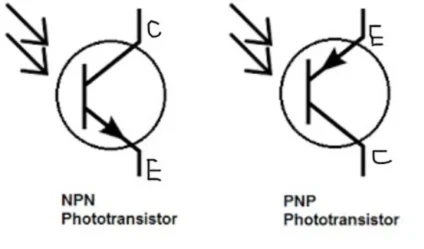Categories
- Phototransistors(21)
- 1
- 2
Introduction to Phototransistors
Phototransistors are a special type of transistor that converts light signals into electrical signals. They control current gain through the illumination of a photosensitive material, typically used in applications such as optoelectronic switches, light-controlled dimmers, photometry, and optical communication. Phototransistors are characterized by fast response times and high sensitivity, making them suitable for various light detection needs in different environments.

Structure and Working Principle
At its core, a phototransistor is a bipolar junction transistor (BJT) equipped with a transparent cover that allows light to reach the base-collector junction. It typically comprises two types of semiconductors: ‘n-type’ and ‘p-type,’ arranged in either an ‘npn’ or ‘pnp’ configuration.
npn Phototransistors: In this configuration, two n-type semiconductors are positioned around a p-type semiconductor.
pnp Phototransistors: In contrast, a pnp configuration features two p-type semiconductors surrounding an n-type semiconductor.
Despite the different configurations, the fundamental operation is consistent. When light—usually in the infrared spectrum—strikes the base-collector junction, it energizes the electrons, allowing them to transition from the valence band to the conduction band. This excitation leads to a change in the base current, which subsequently affects the collector current due to the transistor's amplifying capabilities.







